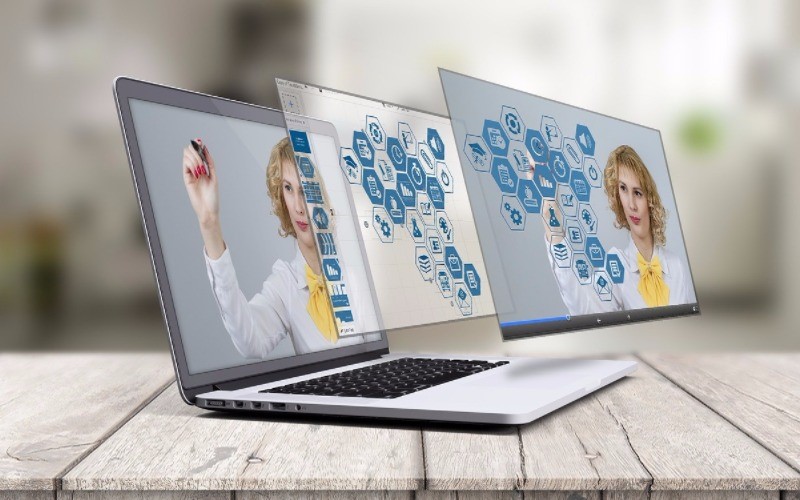The emergence of AR (Augmented reality) promises to revolutionise the customer experience by offering immersive experiences for both consumers and employees. Many do question, however, what is the actual potential of this technology? And how can organisations implement it into their operations and for what purposes?
Juniper Research predicts Augmented Reality (AR) will grow tenfold by 2019 to $US 2.4 billion in revenue. AR technology is currently being used in a number of industries including healthcare, public safety, gas and oil, tourism and marketing.
In terms of consumers and the customer experience, AR is still viewed largely as a novelty. But this is expected to change dramatically over the next couple of years as the technology becomes more widespread, more cost effective and better understood.
AR, VR and MR – What’s the difference
AR (Augmented Reality) refers to the integration or overlay of digital information with the user’s environment in real time. It differs from Virtual Reality, which creates a totally artificial environment and typically requires purpose build devices such as headsets and visors.
AR relies on the existing environment and overlays new digital information. It can utilise common devices such as smart phones and tablets to deliver an immersive experience. Katrina Okoronkwo, lead designer from Mortar Studios, advises, “VR and the devices required to view virtual environments requires extensive processing power that is simply not available on a smartphone. AR allows the user to view the real world while presenting them with digital content such as a 3D animation”
MR or mixed reality tries to combine aspects of both VR and AR. Mixed reality mixes real and virtual worlds to produce new environments and visualisations where physical and digital objects co-exist and interact in real time.
Types of AR content
The earliest use of AR was for geospatial applications: graphical information overlayed ontop of a real-time real-world view. A classic example is Yelps Monocle app where a person with a smartphone moves the device slowly around an area while aiming the phone’s camera. Pop-ups will indicate the location of and ratings for nearby restaurants, bars, or other retail establishments.
Katrina Okoronkwo, observes, “AR evolved into applications that allowed the recognition of 2-D objects through the camera of a smartphone. As an example, you can point a camera in your smartphone to the logo of a business and an animation or a character jumps out of the logo.”.
Geospatial and 2-D image applications can provide useful contextual information. However, it’s 3D AR that promises to deliver real benefits through innovative industrial, entertainment and customer experience applications. It allows truly immersive experiences that can greatly elevate customer engagement and excitement.
Immersive Customer Experiences
Augmented reality can greatly enrich the customer experience in many different, creative and innovative ways. Research from KPMG highlights how AR and VR can be particularly useful to marketing, sales, customer service and post sales, by offering three major benefits:
- Emotional resonance: the technology has the potential to garner greater emotional resonance to objects and topics, by improving the sensory impact of an experience.
- Information accessibility: It can provide information in an instant, easy-to-understand format, that supports multi-sensory learning.
- Compelling hypothetical experiences: the user can experience multiple different scenarios in real time without the need for prototyping or making judgments. Try-before-you buy scenarios could greatly enhance the experience of potential buyers for a product.
“We’re seeing AR currently being developed for a range of pre-sale applications such as ‘try before you buy’ scenarios. They are becoming increasingly popular for selling retail items such as furniture and other household items. As an example you have Ikea’s Place app which allows people to virtually place furniture in their home’, says Okoronkwo.
Okoronkwo adds, “We expect to see the deployment of such apps in Australia to become more common in the next few years. AR has significant potential for online and physical retailers to achieve greater engagement with customers and improve sales for both online and physical retailers.”
“AR has significant opportunities for sales and marketing teams in delivering presentations to potential clients. Sales reps can demonstrate products in the field without having to bring the actual products along to a sales meeting and place those products into the actual environment of the customers home or business.”
Augmented reality can help customers understand how to use or assemble a product after purchase. Virtual manuals or brochures can offer 3d content to guide end-users in a manner that is more engaging and interactive than a written user manual.
Is it right for your organisation?
At present, the impact of AR is not fully understood and it has its share of skeptics. However, the failure to appreciate the opportunities it may present can be the difference that allows one competitor to leap over its competition.
There again to implement the technology purely for its own sake would likely be a costly mistake. Katrina Okoronkwo from Mortar Studios, advises, “the decision to implement AR, or any innovative technology for that matter, should be based on whether it solves a problem. Will it save time, improve productivity, increase customer or employee engagement, etc. It needs to bring value to the organisation and its customers.”


